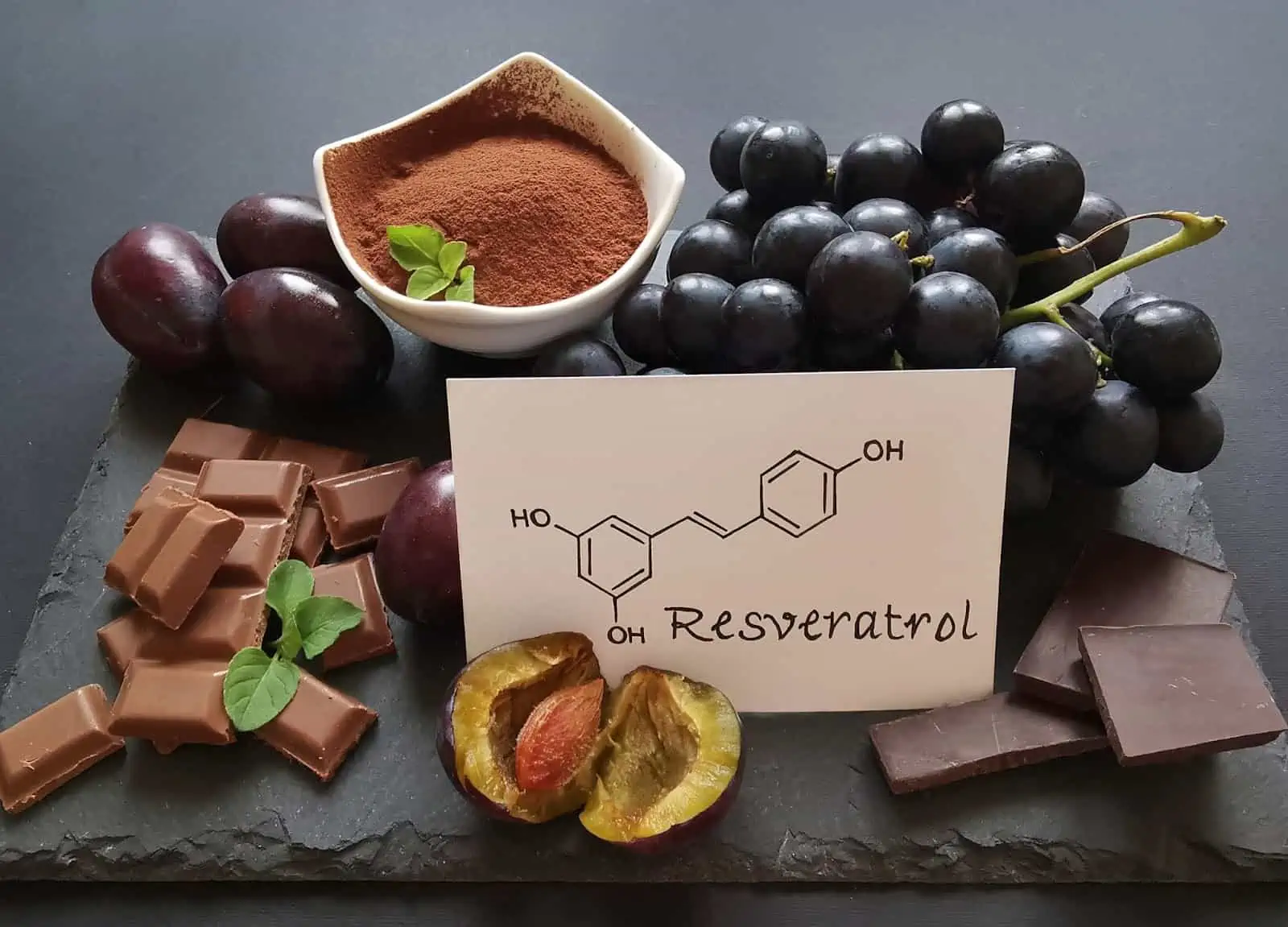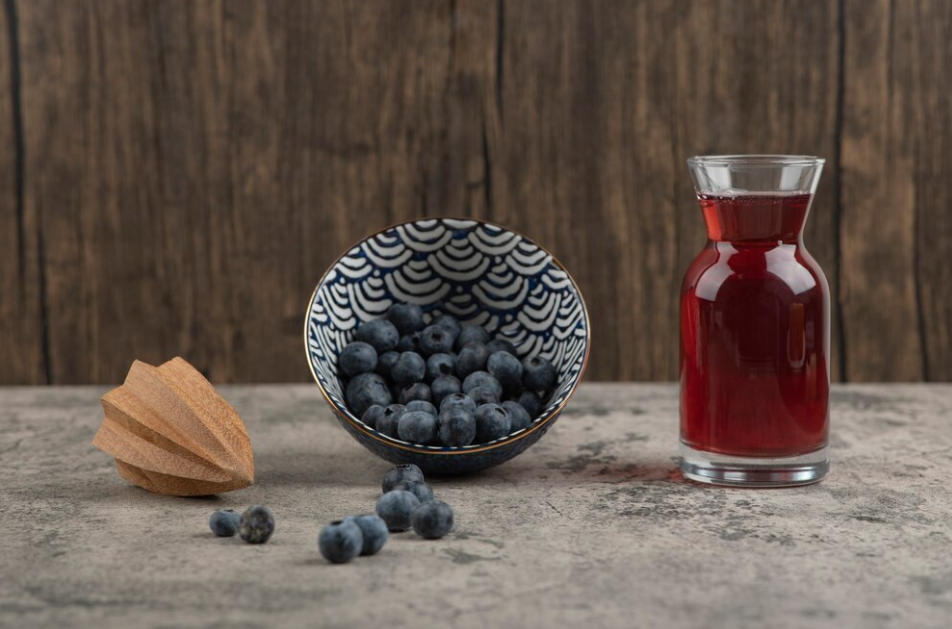by William Clearfield, D.O. for Longevinex
Prelude: Consequences of the “Standard American Diet.”
On the sixth episode of the 1970 first season of the television classic, “The Odd Couple,” uptight, neatnik Felix Unger (played by Tony Randall) confronts his boorish, slob roommate Oscar (Jack Klugman) about Oscar’s recurring and increasingly severe stomach pain. (1)
“I fold,” Oscar says, rising slightly from his chair before grabbing his stomach and bending over in pain. He hits the table’s edge as he rises, turning over his facedown cards.
“You folded with a full house,” Murray the Cop (Al Molinaro, owner of Al’s Diner from Happy Days), sitting to his right, asked. “Oh, Felix, he must be sick.”
Oscar let out a low groan.
“Oscar, Oscar, Oscar,“ Felix said. “It’s your stomach, isn’t it? I’m calling the doctor.” “You drove me to it, “Oscar replied, squinting back tears.
Felix points to Oscar’s half-eaten “snack” on the card table before him, a salami and cheese with lettuce, tomatoes, and mayo on a hard Italian roll with french fries also dipped in mayo on the side.
“Really, Oscar,” Felix said. “You take a loaded tamale, point it at your stomach, and blame me? Sad.”
“What’s sad about it,” Oscar replied, reaching for a fry. Murray slaps his hand, causing Oscar to drop it.
“Sha,” Murray said. “Listen to Felix, Oscar. He’s very wise.” “It is sad,” Felix said again. “You and your sad diet.”
Felix takes a notepad and writes ‘S.A.D.’ on it.
“S, period. A period. D, period, Oscar,” Felix says, pointing to each letter. “Standard American Diet.” (1) Turning back to Oscar’s half-eaten tamale, Felix points at it.
Je accuse, Oscar Madison. Your tamale is processed junk you use to run the greatest machine ever invented.”
“What is that,“ Oscar asked.
“Oscar Madison’s body and brain,” Felix replied. “Would you put sugar and gunk in your beloved Corvette? ”
“Of course not,” Oscar replied. “It needs high test.”
“And Oscar Madison doesn’t,” Felix replied. “Are you not a high-powered human Corvette engine? Why, Oscar, do you fuel yourself with useless sugar, chips, and white bread? Look at you.”
Oscar, New York Mets hat on backward, wearing a stained white t-shirt, rubbed his belly hanging over his 50-inch waist-sized jeans.”
“You make me sick,” Felix said, tugging on his 29-inch waistband. “That tamale is S.A.D., it makes you sick, and then you are sad. “I’ve called Dr. Melnitz. He will be here within the hour.”
Introduction
If we continued our Felix and Oscar vignette, within two weeks, Oscar would awaken in a hospital bed, having undergone the standard of care treatment of that day, partial gastrectomy. By removing a portion of his stomach, Oscar would produce less stomach acid and (allegedly) reduce or eliminate his symptoms.
Of course, partial gastrectomy is an invasive procedure with the risk of developing wound infections, blood clots, nutritional diseases, acute myocardial infarctions, and an occasional death. (2) Kind of bad for business for Dr. Melnitz and Oscar too.
Since the “dark ages” of Oscar’s time, treatment for digestive issues have undergone significant developments and transformations. In the late 1970s-1980s, antacids (Tums, Maalox, Mylanta, for example) and histamine H2-receptor antagonists (Tagamant and Zantac) became the go-to remedies for managing gastrointestinal (GI) issues. (3)
Antacids provide short-term relief by neutralizing stomach acid. (4) H2 blockers work by inhibiting the histamine H2 receptors in the stomach, thereby reducing acid production. (5)
In 1989, the proton pump inhibitor (PPI), omeprazole, further revolutionized digestive therapy. (6) Trade names Prilosec and its rivals, lansoprazole (Prevacid) and esomeprazole (Nexium), gained widespread use for their efficacy in managing gastroesophageal reflux disease (GERD), ulcers, and other acid-related disorders.
PPI indications were severe or frequent heartburn, erosive esophagitis, and ulcers. Designed for short-term use, PPIs were, from the get-go, abused. A significant number of patients use PPIs for extended periods of time. Treating individuals taking PPIs for more than thirty (30) years is not uncommon! Long-term effects of prolonged PPI use include increased risk of bone fractures, magnesium, calcium, and vitamin B12 deficiencies, kidney disease, and immune dysfunction. (8)
An increasingly common but poorly recognized result of long-term use of PPIs is hypochlorhydria or deficient or absent stomach acid. (9) Symptoms of hypochlorhydria include abdominal pain, bloating, gas, diarrhea, constipation, undigested food products, reflux esophagitis, and heartburn. Chronic PPI imbiber beware, the symptoms of low stomach acid are frequently indistinguishable from excess stomach acid (the reason one begins PPIs in the first place.) (10)
To differentiate between low and high stomach acid, obtain Betaine hydrochloride (acid) tablets. On the morning of your experiment, take one tablet after breakfast, two tablets after lunch, and three tablets after dinner. The endpoint is abdominal pain and burning, similar to heartburn or acid reflux. If the pain is three or less on a scale of 1 to 10, then on day 2, use four tablets with breakfast, 5 for lunch, and 6 for dinner. Continue increasing the number of pills by one each successive meal the next day. If it takes less than four pills to create heartburn-like pain, your stomach acid is in excess. If it takes more than seven pills, your stomach acid is low. (11)
We recommend the baking soda test to confirm whether you have low or high stomach acid. Stomach acid + baking soda produces CO2 (carbon dioxide). Carbon dioxide causes burping. If it takes more than four minutes before burping, you are low or deficient in stomach acid. Taking PPIs in the face of low stomach acid creates a vicious negative feedback cycle, worsening the low stomach acid condition.
Quite the dilemma Oscar’s got. What to do? What do we do?
The 4 R’s
We looked to some wiser heads than those in Felix and Oscar’s apartment. The Chopra Clinic, well known for leading-edge medical thinking, was kind enough to publish their “4Rs,” dietary lifestyle changes. We added two of our own (to make it 6Rs) to support digestive health. (13)
- Remove gut-harming foods made with white sugar, white flour, and for some individuals, dairy. Caffeine, alcohol, soy, eggs, shellfish, saturated and trans-fats, and processed foods may be other culprits. We identify items to avoid by either a food sensitivity test or an elimination diet. Eating a diet low in processed foods and sugar supports good digestive health. Additionally, adding fermented foods, such as yogurt, kefir, and sauerkraut, helps increase the number of beneficial bacteria in the gut.
- Repair the gut with clean, whole foods. Items rich in fiber, fruits, and vegetables and high in omega-3 fatty acids, such as fish and fish oils, nuts, seeds, and avocados, are preferred.
- Restore gut health pre-and probiotics. Prebiotic foods include garlic, onions, and bananas. Probiotic entities, including plain yogurt, kefir, kimchi, kombucha, and fermented vegetables, help improve the microbiome, the bacterial flora residing in the gut. ( A healthy microbiome, the beneficial bacteria distributed throughout the intestinal system, plays a crucial role in digestive health. A healthy digestive system is essential for absorbing nutrients, eliminating waste, and ensuring adequate immune system function.)
- Replace digestive enzymes and bile salts to aid digestion. Organic Himalayan pink salt is our go-to for taste and maintaining fluid volume.
Dr. C’s Extra 2 R’s (Making it 6 R’s)
- Lifestyle Modifications include stress reduction at home and work when possible, and stress reduction techniques such as exercise, meditation, and yoga improve digestive function and overall health.
- Supplementation to heal and repair damaged GI tissue. Our go-to “Magnificent Seven of Digestive Health” includes Vitamin C, apple pectin, taurine, fennel seed powder, rice bran IP6, betaine, lactase, and, surprisingly, fresh, crushed (not processed) garlic powder. (14)
The Magnificent 7 of Digestive Health
-
- Vitamin C + Apple Pectin improve bile flow and excrete cholesterol. (15)
- Taurine thins bile that breaks down fats and improves digestion. (16)
- Fennel seed powder absorbs air and gas to reduce bloating, belching, and flatulence. (17)
- Rice Bran IP6 supports healthy bile flow and digestive regularity and controls iron and heavy metal metabolism. (18)
- Betaine is a replacement acid restoring normal pH balance in the GI tract while aiding nutrient absorption. (19)
- Lactase facilitates lactose digestion reducing the symptoms of dairy (lactose) intolerance. (20)
- Alkalinized Garlic Powder inhibits bacterial growth, supports a healthy balance of gut bacteria, and contributes to overall digestive well-being. (21)
A magnificent seven indeed. But no one wants to take multiple regimens of pills all day, every day. Fortunately, Felix found that Garligest (™) from Resveratrol Partners LLC, makers of Longevinex and Garlinex, contains all Magnificent Seven ingredients. Garligest reduces indigestion, bloating, and gastric discomfort after meals. Garligest also decreases air, gas, burping, and flatulence while improving bile flow and nutrient absorption and ensuring adequate gastric acidity while balancing the microbiome.
Depending on symptoms, Garligest’s dose is 2-3 capsules for each meal or just your largest meal.
Side effects, though rare, include stomach upset and diarrhea. Those with sensitive stomachs must introduce Garligest slowly, one capsule per meal. Eventually, increase the dose to tolerance.
Afterward
The 2023 version of Oscar never gave surgery a thought. Thus, the evolution of medicine. With Felix in tow, Oscar turned his back on his ‘S.A.D. dietary days,’ and viola was pain-free for the first time in years. With his largest meals, Oscar started his Garligest capsule journey slowly, taking three capsules daily.
At their next poker game, Oscar couldn’t stop raving.
“It’s a near miracle,” Oscar said. “No burping, no gas, no five different pills to quiet the stomach.” The doorbell rang. As Oscar looked at his hand, Felix got up to answer it.
“Letter for Oscar Madison,” the courier said, handing Felix a sealed envelope. “It’s for you, Oscar,” Felix said.
Oscar ripped the side of the envelope, tearing the sheet inside on its edge. Looking at it, Oscar turns a noticeable shade lighter.
“I fold,” he says.
Oscar flips his cards over, grabs his stomach again, and groans.” “Three aces,” said Murray. “You are folding with three aces?” Oscar groans again and rocks forward, bet at the waist.
“Your ulcer’s back?” Felix asked.
Oscar, groaning again, shakes his head no. “Then what is it, Oscar?”
Oscar holds up the torn letter from the envelope. “Dr. Melnitz’s bill.”
Conclusion
Scientifically crafted, the one-of-a-kind Garligest blend combines garlic’s rich and fragrant flavor with a stimulating blend of herbal extracts to promote digestive health. Adding this natural powerhouse to any daily routine is a snap. Garligest is a wise, safe investment in digestive health. Every ingredient is naturally-sourced and carefully selected to provide the digestive relief one seeks with minimal to no side effects.
References
-
- https://www.imdb.com/title/tt0664260/?ref_=ttep_ep6
- Grotto D, Zied E. The Standard American Diet and its Relationship to the health status of Americans. Nutr Clin Pract. 2010 Dec;25(6):603-12. doi: 10.1177/0884533610386234. PMID: 21139124.
- chrome-extension://efaidnbmnnnibpcajpcglclefindmkaj/http://www.columbia.edu/itc/h s/medical/pathophys/gi/050206gi_PharmBW.pdf
- Salisbury BH, Terrell JM. Antacids. [Updated 2022 Aug 15]. In: StatPearls [Internet]. Treasure Island (FL): StatPearls Publishing; 2023 Jan-. Available from: https://www.ncbi.nlm.nih.gov/books/NBK526049/
- Nugent CC, Falkson SR, Terrell JM. H2 Blockers. [Updated 2022 Dec 11]. In: StatPearls [Internet]. Treasure Island (FL): StatPearls Publishing; 2023 Jan-. Available from: https://www.ncbi.nlm.nih.gov/books/NBK525994/
- Strand DS, Kim D, Peura DA. 25 Years of Proton Pump Inhibitors: A Comprehensive Review. Gut Liver. 2017 Jan 15;11(1):27-37. doi: 10.5009/gnl15502. PMID: 27840364; PMCID: PMC5221858.
- Shin JM, Sachs G. Pharmacology of proton pump inhibitors. Curr Gastroenterol Rep. 2008 Dec;10(6):528-34. doi: 10.1007/s11894-008-0098-4. PMID: 19006606; PMCID: PMC2855237.
- Metz DC. Long-term Use of Proton-Pump Inhibitor Therapy. Gastroenterol Hepatol (N Y). 2008 May;4(5):322-5. PMID: 21904505; PMCID: PMC3093718.
- https://my.clevelandclinic.org/health/diseases/23392-hypochlorhydria#symptoms-and-causes
- Ibid
- chrome-extension://efaidnbmnnnibpcajpcglclefindmkaj/https://welllifefm.com/wp-cont ent/uploads/2017/04/Testing-Low-Stomach-Acidity.pdf
- https://www.youtube.com/watch?v=6jyAbqak0xk&t=9s
- https://chopra.com/articles/heal-your-gut-with-the-4r-program#:~:text=The%204R%20p rogram%20offers%20four,to%20fully%20repair%20your%20gut.
- chrome-extension://efaidnbmnnnibpcajpcglclefindmkaj/https://sargnaturecure.com/wp -content/uploads/2020/10/Prescription-for-Natural-Cures-PDFDrive.com-.pdf
- Koutsos A, Tuohy KM, Lovegrove JA. Apples and cardiovascular health–is the gut microbiota a core consideration? Nutrients. 2015 May 26;7(6):3959-98. doi: 10.3390/nu7063959. PMID: 26016654; PMCID: PMC4488768.
- Chen I, Cassaro S. Physiology, Bile Acids. [Updated 2023 May 1]. In: StatPearls [Internet]. Treasure Island (FL): StatPearls Publishing; 2023 Jan-. Available from: https://www.ncbi.nlm.nih.gov/books/NBK549765/
- https://www.health-total.com/digestion-articles/kitchen-spices-for-gas-problems/
- Tamura M, Hori S, Hoshi C, Nakagawa H. Effects of rice bran oil on the intestinal microbiota and metabolism of isoflavones in adult mice. Int J Mol Sci. 2012;13(8):10336-10349. doi: 10.3390/ijms130810336. Epub 2012 Aug 17. PMID:22949864; PMCID: PMC3431862.
- Yago MR, Frymoyer AR, Smelick GS, Frassetto LA, Budha NR, Dresser MJ, Ware JA, Benet LZ. Gastric reacidification with betaine HCl in healthy volunteers with rabeprazole-induced hypochlorhydria. Mol Pharm. 2013 Nov 4;10(11):4032-7. doi: 10.1021/mp4003738. Epub 2013 Sep 10. PMID: 23980906; PMCID: PMC3946491.
- https://www.hopkinsmedicine.org/health/conditions-and-diseases/lactose-intolerance#:~:text=Lactase%20breaks%20down%20the%20lactose,a%20food%20allergy%20to%20 milk.
- Bhatwalkar SB, Mondal R, Krishna SBN, Adam JK, Govender P, Anupam R. Antibacterial Properties of Organosulfur Compounds of Garlic (Allium sativum). Front Microbiol. 2021 Jul 27;12:613077. doi: 10.3389/fmicb.2021.613077. PMID: 34394014; PMCID: PMC8362743.
Share
Introduction In a world where health is increasingly prioritized, the interplay of different body systems is more evident than ever. The link between heart health and brain function is crucial yet often overlooked. (1) For […]
Introduction The search for ways to live longer has led to the development of anti-aging supplements that aim to slow down the natural process of aging. Two such supplements that have gained attention are NMN […]
Introduction In today’s health-conscious society, resveratrol supplements are gaining increasing attention for their numerous health benefits. A naturally occurring compound mainly found in grape skins and red wine, resveratrol is praised for its antioxidant properties […]







